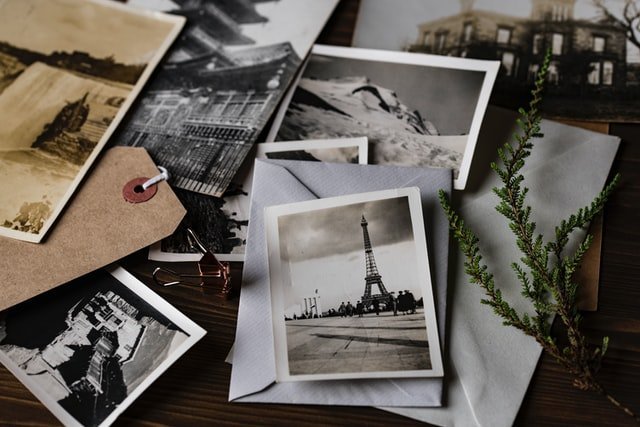
Photography is in one of the greatest upheavals of all time. The reason for this is the advancing digitization of single lens reflex cameras and the spread of smartphones. It is possible to take a photo anytime and anywhere. Today’s cell phones even make it possible to take really professional snapshots. But what happens to the photos themselves? They mostly disappear in the depths of the memory cards and hard drives of smartphones. Maybe photos will stop printing soon? What did it look like in the past and how will the photo develop as an expression in the future?
Photography in its infancy
August 19, 1839 was a historic day for photography. Without him, the media landscape would not be what it is today. It is the day on which Joseph Nicéphore Niépce presented the permanent reotype. A process by which he could capture photos with a camera obscura. A silver-plated copper plate that has been vaporized with iodine is exposed for 20 seconds. The plate is then developed in a darkroom with mercury vapors and fixed with a potassium cyanide solution.
Needless to say, the death rate among photographers who used this technique at the time was relatively high. Photography for the masses should be a couple of years away. In addition, other photo techniques developed, such as the calotype, from which today’s photography with films has developed.
Photos as a status symbol
As the 1840s progressed, photography became more and more commercial. Various photo studios opened and people traveled from near and far to be photographed. Anyone who had a photo taken of themselves or their family was popular. The photos were accordingly expensive. Compared to today’s photography, the single picture was valuable, a true event and something to cherish.
Especially when you consider what an ordeal taking photos itself was for the models. They had to keep their eyes open for minutes and had to be supported in their poses. However, the technology developed rapidly. Larger lenses and artificial light made photography easier for everyone involved.
© YouTube.com, Simply history
Industrialization of photography
Towards the end of the 19th century, portable camera models that used roll film came on the market. Anyone who could afford a camera was now able to take photos anywhere. The price for such a device was around $ 25 at the time, which would be more than $ 700 today. In addition, there is the development service, which cost around 10 dollars per roll film. So photography at the turn of the century was reserved for the rich. Printed photos were worth their weight in gold.
Pictures for the masses
Gradually, however, photography became suitable for the masses. The devices developed further, became smaller, cheaper and at some point accessible to a broad masses. However, the photos were still taken very carefully. It was a kind of culture of remembrance. The camera came to light on special occasions intended to document private life. The photos themselves were kept in albums and archived.
Early 1970s instant cameras became very popular. There were only minutes between taking the photo and developing it. The result was almost immediately visible. Perhaps that was one of the first big steps towards the devaluation of photos.
Digital cameras: photos lose value?
In the 1990s, companies like Casio and Canon launched the first digital cameras. This made it possible to view photos immediately after shooting and to delete them if you didn’t like them. Pictures that you like are saved on the computer and printing is optional. With this technique it is possible to take as many pictures as you want. The photo becomes mass-produced and will be devalued.
Incidentally, the same applies to today’s photography with smartphones. An almost infinite number of photos are taken each day. Most of them are deleted again or disappear in the smartphone memory. Another part is uploaded on social media. Very few photos are printed out.
Print photos yourself
However, with the advent of digital cameras and cell phone photography, another market has emerged. The photo printing. As a result, photos can gain in value again and become a welcome change, because photos can no longer be printed on paper, but on various materials.
Canvas photos have become very popular. But also other substances, such as Aluminum plates can be used as photo carriers. The motif is printed directly on so-called Alu-Dibond plates. They consist of two thin aluminum plates that enclose a plastic core. That makes them very weather-resistant. They are also ideal as an eye-catcher in the apartment.
Printed photos will probably never die out. They still have a special status. Only very special photos can be printed on the wall or in an analog photo album. Although printed images will remain the exception, they will still have a high priority among people. They can be seen as a kind of expression of personality in order to develop oneself.
Social media: photos as a snapshot
However, it looks a little different on social media. On Facebook alone, around 3000 photos are uploaded every second. The images serve more than a kind of snapshot, because there is only a short time window in which they can be actively perceived. Then they get lost in the feed. The Snapchat portal even goes one step further. Photos are uploaded here and are only visible and stored for a short time before they are deleted again.
Digital photos therefore only have a very short half-life for a potentially large audience, while printed photos only reach a small audience and are perceived by them longer and more intensely.